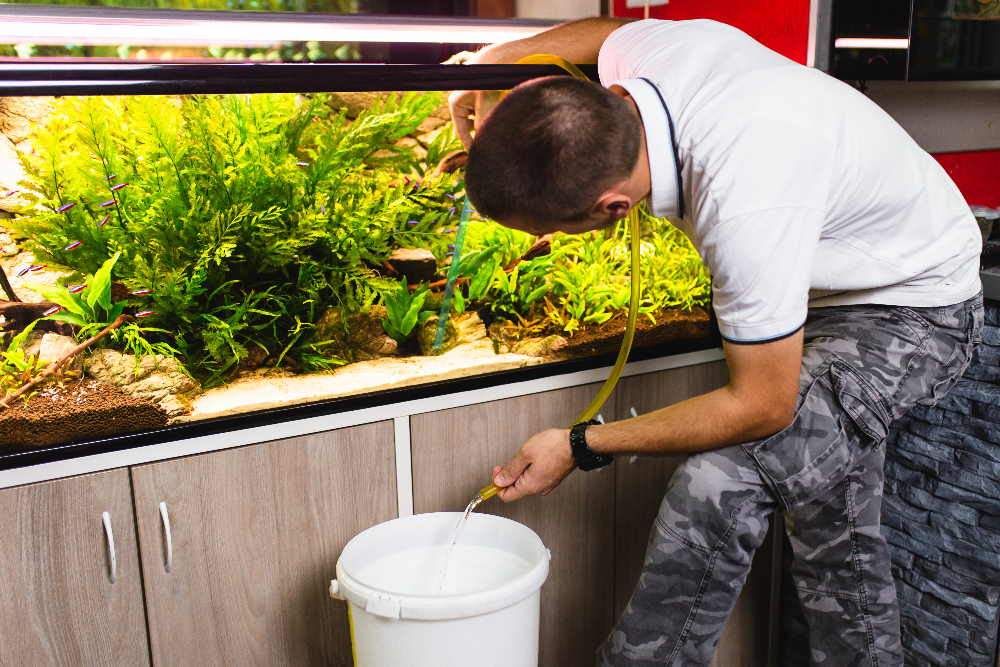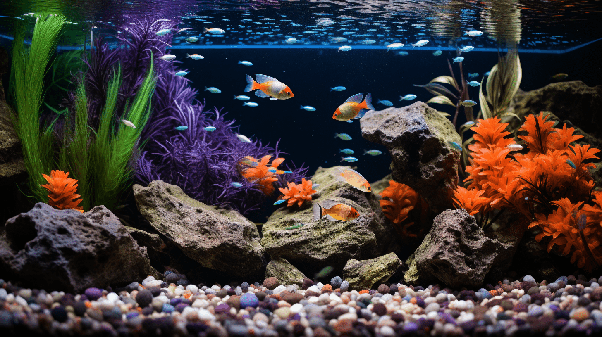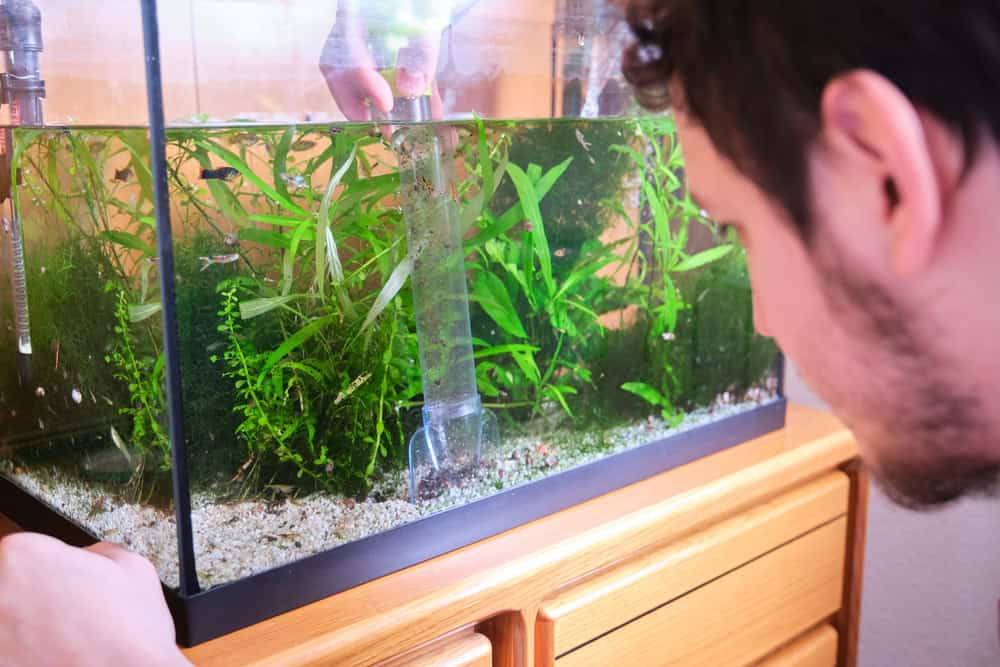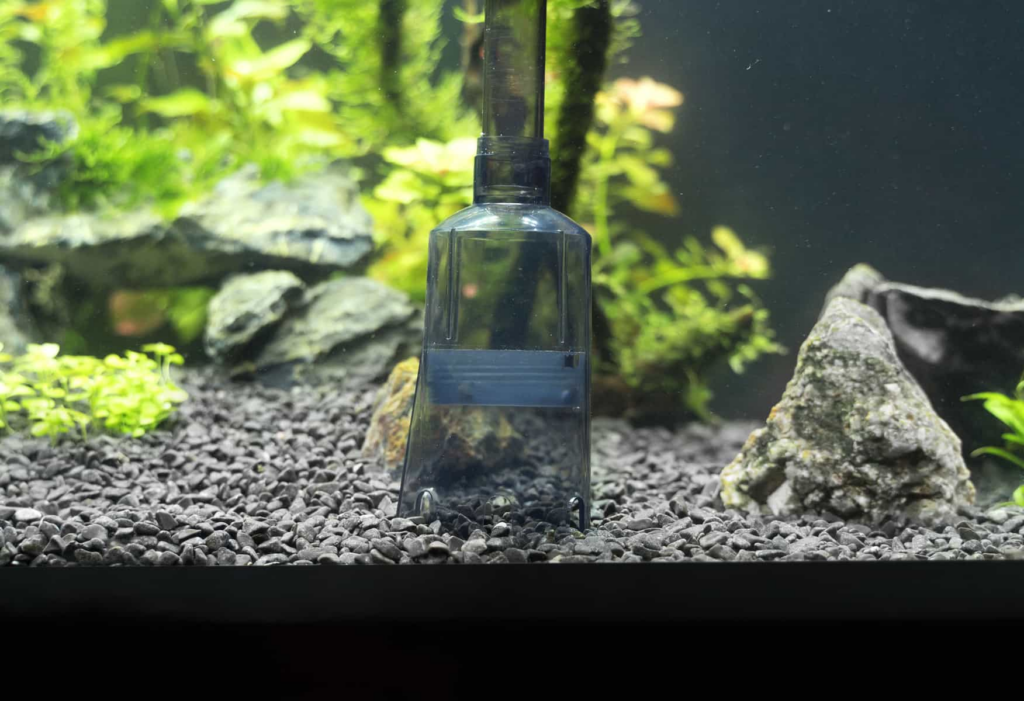When it comes to keeping your fish tank clean and maintaining a healthy environment for your aquatic friends, regular maintenance is key. One essential task is vacuuming the gravel in your fish tank. Gravel vacuuming not only removes debris and waste from the substrate but also helps to maintain the overall water quality. In this article, we will explore the step-by-step process of vacuuming gravel in a fish tank and provide you with some useful tips to ensure efficient and effective cleaning.

Understanding the Basics
Before we delve into the actual process, let’s first understand why gravel vacuuming is necessary.
Over time, fish waste, uneaten food, and other organic matter accumulate in the gravel of the fish tank.
If left unattended, this debris can decompose and result in poor water quality, leading to stress and diseases among the fish.
Regular gravel vacuuming is essential to remove this buildup and maintain a clean and healthy environment in the tank.
Preparing for Gravel Vacuuming
Prior to starting the gravel vacuuming process, it is important to ensure the safety of your fish and the equipment.
Firstly, turn off all electrical equipment, such as pumps and filters, to prevent any accidents during the cleaning process.
Next, gather the necessary tools for gravel vacuuming, including a gravel vacuum siphon, a bucket, and a water conditioner if needed. We recommend using this All-In-One Aquarium Cleaning Tool Kit from Amazon.
It is also crucial to ensure that the water temperature in the tank is suitable for the fish during the cleaning process.
Step-by-Step Guide to Vacuuming Gravel in a Fish Tank
Now that you have prepared everything, let’s go through the step-by-step process of vacuuming the gravel in your fish tank:
Step 1: Positioning the gravel vacuum in the tank
Submerge the gravel vacuum into the tank, making sure that the intake tube is deep enough to reach the bottom of the tank where the debris has settled. Position the vacuum in an area where there is a substantial amount of waste accumulation.
Step 2: Starting the siphoning process
Place the other end of the gravel vacuum tube into a bucket. Now, create a siphon by gently sucking on the tube until the water starts flowing out of the tank and into the bucket. Be careful not to ingest any water or fish waste during this process.
Step 3: Carefully moving the gravel vacuum over the gravel
Slowly move the gravel vacuum over the substrate, allowing the suction to pick up the debris. Be gentle and avoid disturbing the gravel too much to prevent stress to the fish or disturbing beneficial bacteria colonies.
Step 4: Collecting debris in the gravel vacuum
As you move the gravel vacuum, you will notice the waste and debris being sucked up into the siphon. Continue vacuuming until the water in the tank appears clear and free from debris. Empty the collected debris from the bucket as needed.
Step 5: Properly disposing of the collected waste
After completing the gravel vacuuming process, dispose of the collected waste in an appropriate manner. Avoid pouring the waste down the drain, as it can have a negative impact on the environment. Instead, consider using it as compost for non-edible plants or in your gardening efforts.

Choosing the Best Tools for Cleaning Aquarium Gravel
This section explores the essential tools for cleaning fish tanks, focusing on how to use a gravel cleaner, aquarium siphon, and gravel vac.
Discuss how to select the right tool for your needs, whether for cleaning fish tank gravel in a standard setup or a planted tank.
Emphasize using a plastic tube and siphon hose to effectively clean aquarium gravel without disturbing the water column.
Clean fish tank gravel regularly to maintain a healthy environment for your aquatic life and prevent the buildup of harmful substances.
Maintaining Water Quality in Fish Tanks with Regular Gravel Cleaning
Explore the significance of regularly cleaning aquarium gravel to ensure optimal water quality in fish tanks.
Learn how using a gravel vacuum and gravel siphon can effectively remove excess food and leftover food particles, preventing harmful waste buildup.
This section explains how maintaining clean aquarium gravel supports a stable water column and contributes to a healthy environment for fish, ensuring that your aquatic ecosystem thrives.
Using a gravel vacuum is an effective way to remove debris and excess food from your aquarium, ensuring that your fish tank gravel remains clean and your water quality stays optimal.

Best Practices for Effective Gravel Vacuuming
To ensure effective cleaning and minimize stress on your fish, here are some best practices to follow:
- Vacuum the gravel once a week or as needed, depending on the size of your tank and the number of inhabitants.
- Consider using an aquarium water siphon with a gravel guard to protect delicate plants or fish from getting sucked into the vacuum.
- Use a slow and steady motion while vacuuming to avoid uprooting plants or stirring up excessive detritus.
- If you have a deeper substrate, adjust the intake tube to reach the bottom without disturbing the layers of gravel.
Troubleshooting and Common Mistakes
Gravel vacuuming might come with a few challenges. Here are some common issues and how to overcome them:
- If the siphoning process is not starting, try priming the siphon by filling the tube with water before creating suction.
- If the gravel vacuum gets clogged with debris, disconnect it from the siphon and clean it out before continuing.
- Avoid removing all the gravel during vacuuming, as it serves as a biological filter for beneficial bacteria.

Aftercare and Maintenance
After completing the gravel vacuuming process, it’s important to restore the normal environment for your fish. Switch on the electrical equipment and ensure the water temperature is at the desired level.
Clean and store your gravel vacuum equipment properly to maintain its effectiveness for future use. Finally, remember to incorporate regular maintenance tasks, including water changes and filtration system maintenance, to keep your fish tank clean and your fish happy and healthy.
Conclusion
Regular gravel vacuuming is an essential task for maintaining a clean and healthy fish tank.
By following the step-by-step guide outlined in this article and incorporating best practices, you can effectively remove debris and waste from the substrate, ensuring a pristine environment for your aquatic pets.
Remember, proper maintenance and regular cleaning are crucial for the well-being of your fish and the overall success of your aquarium.



